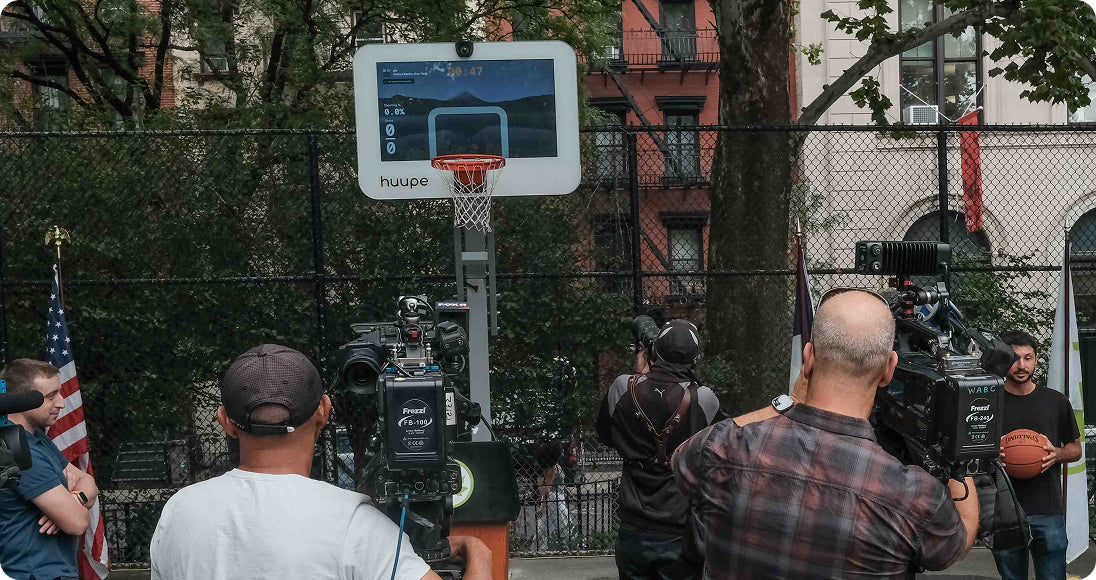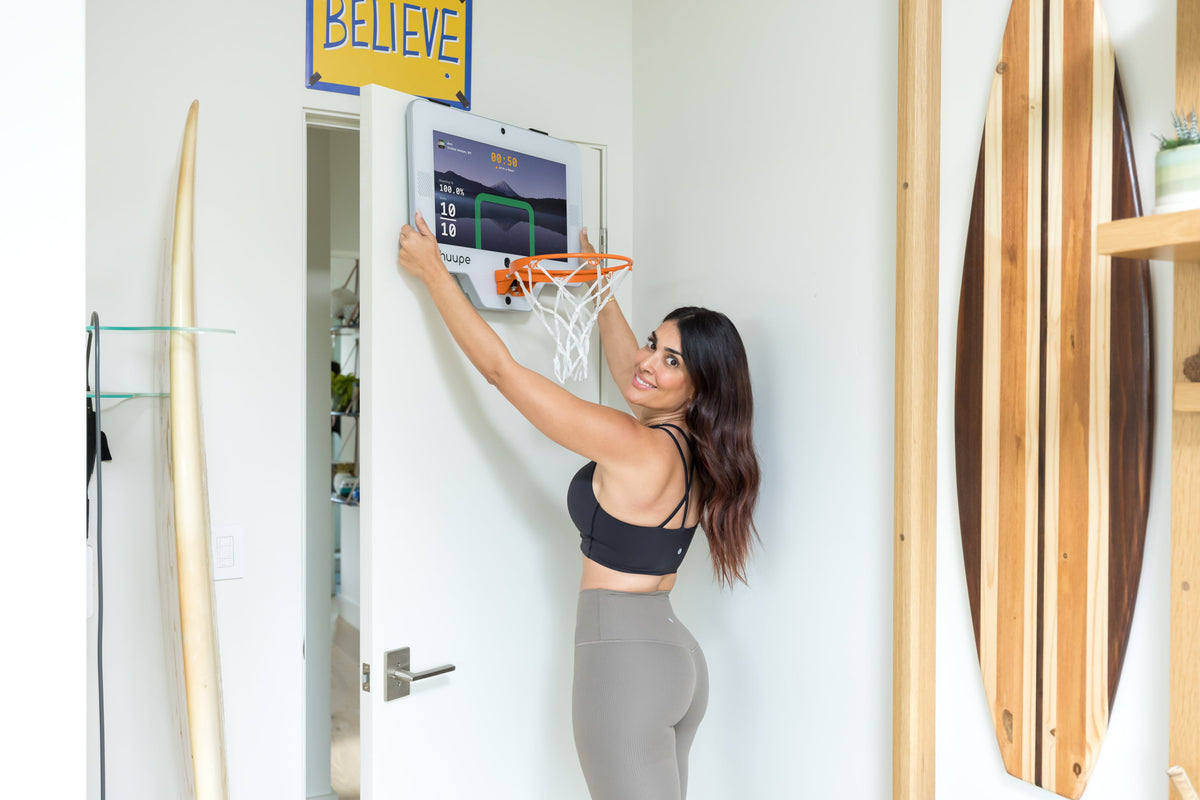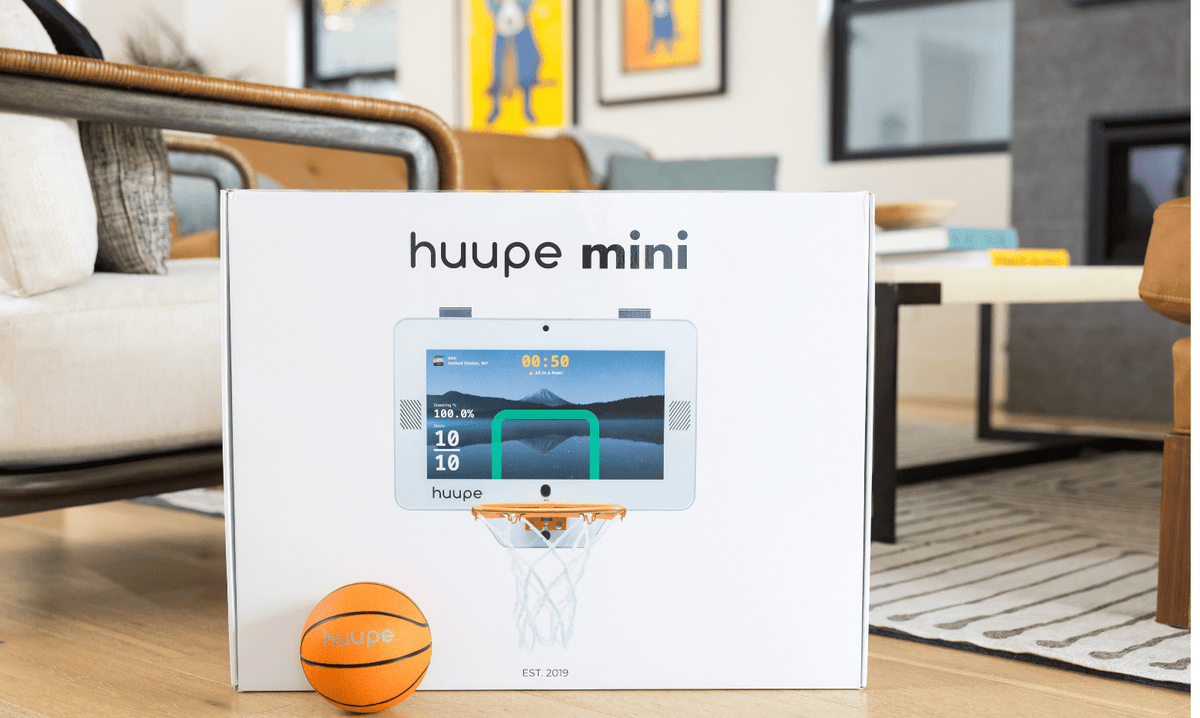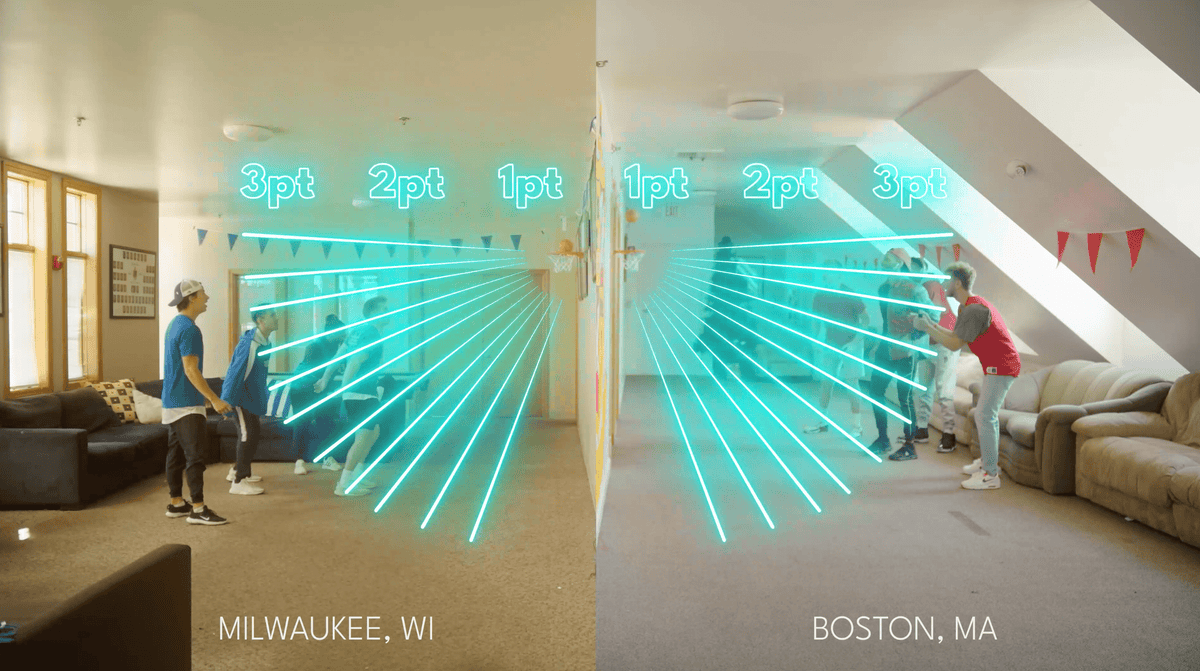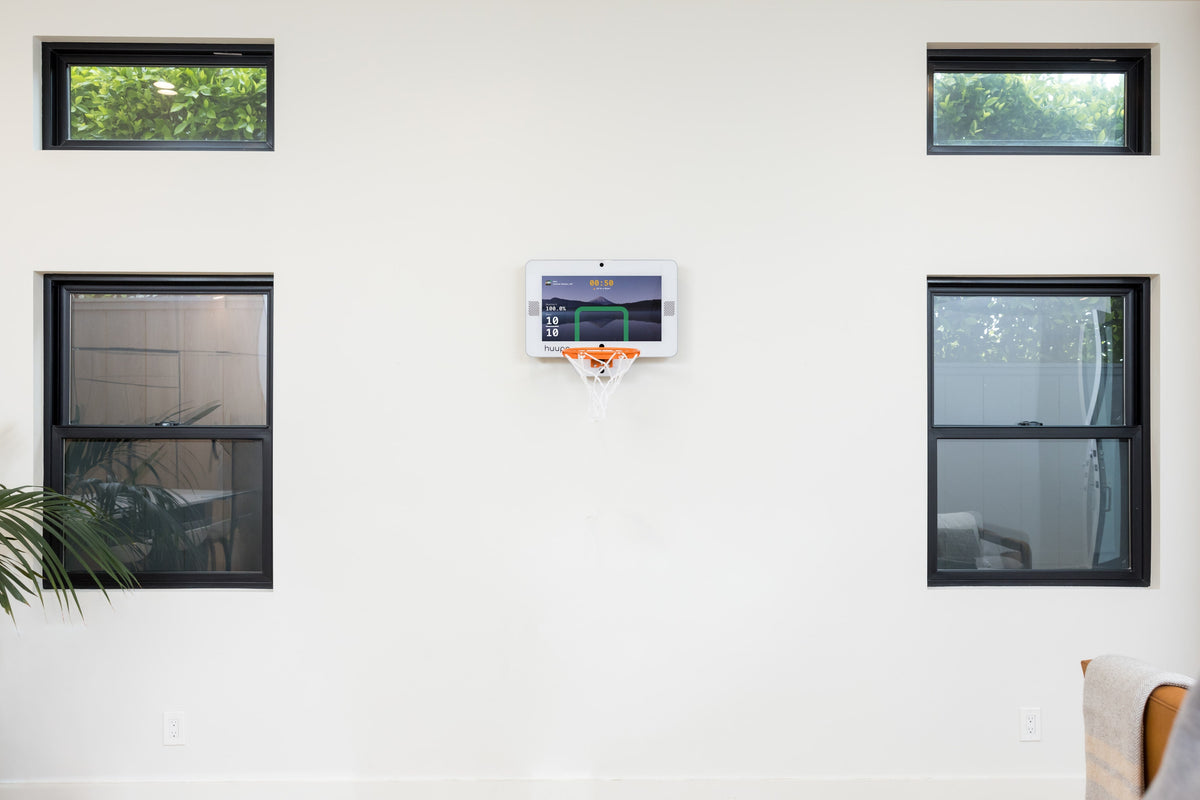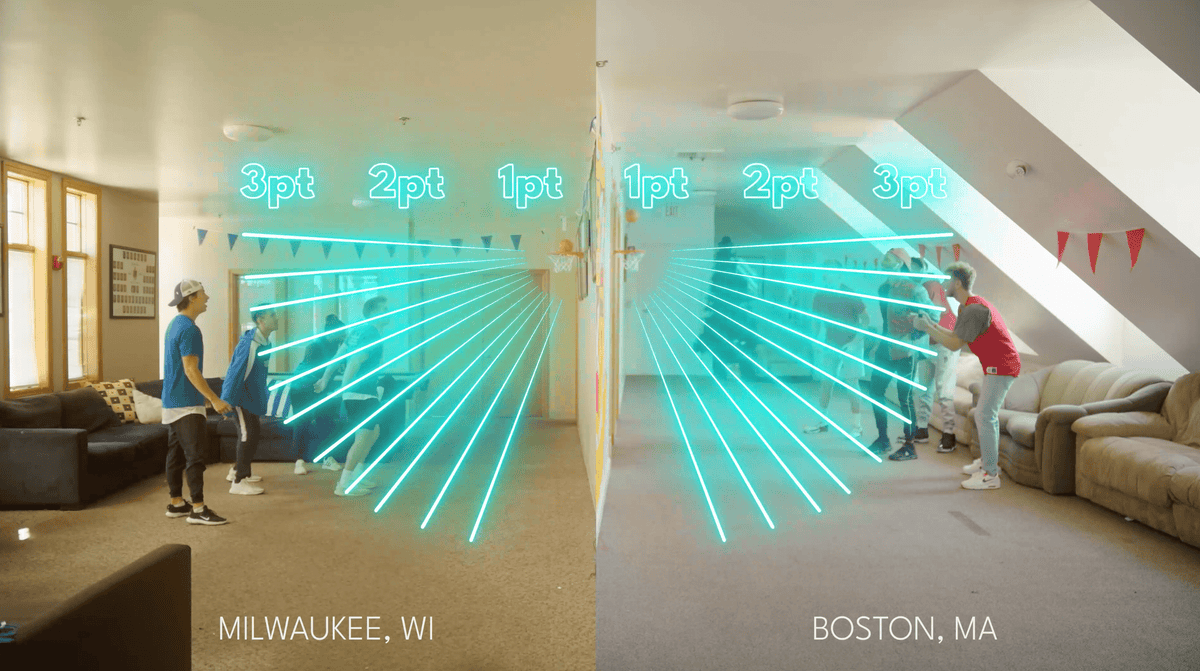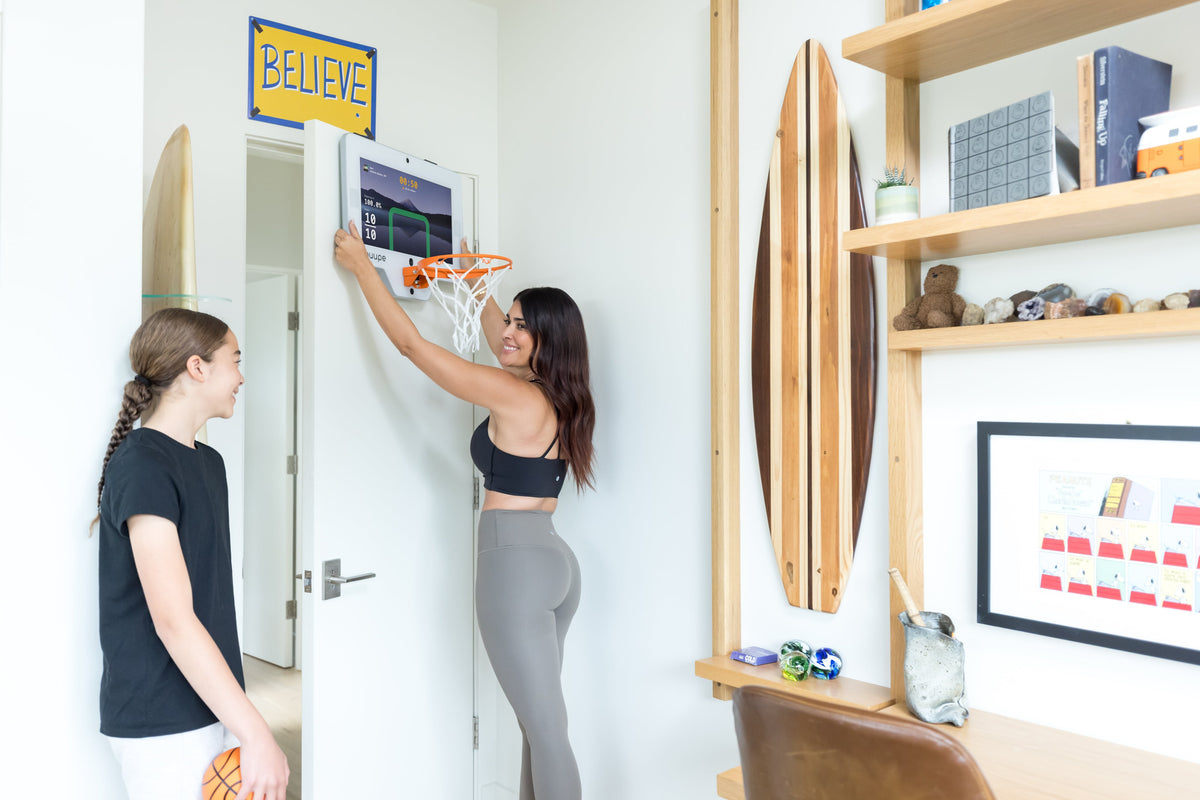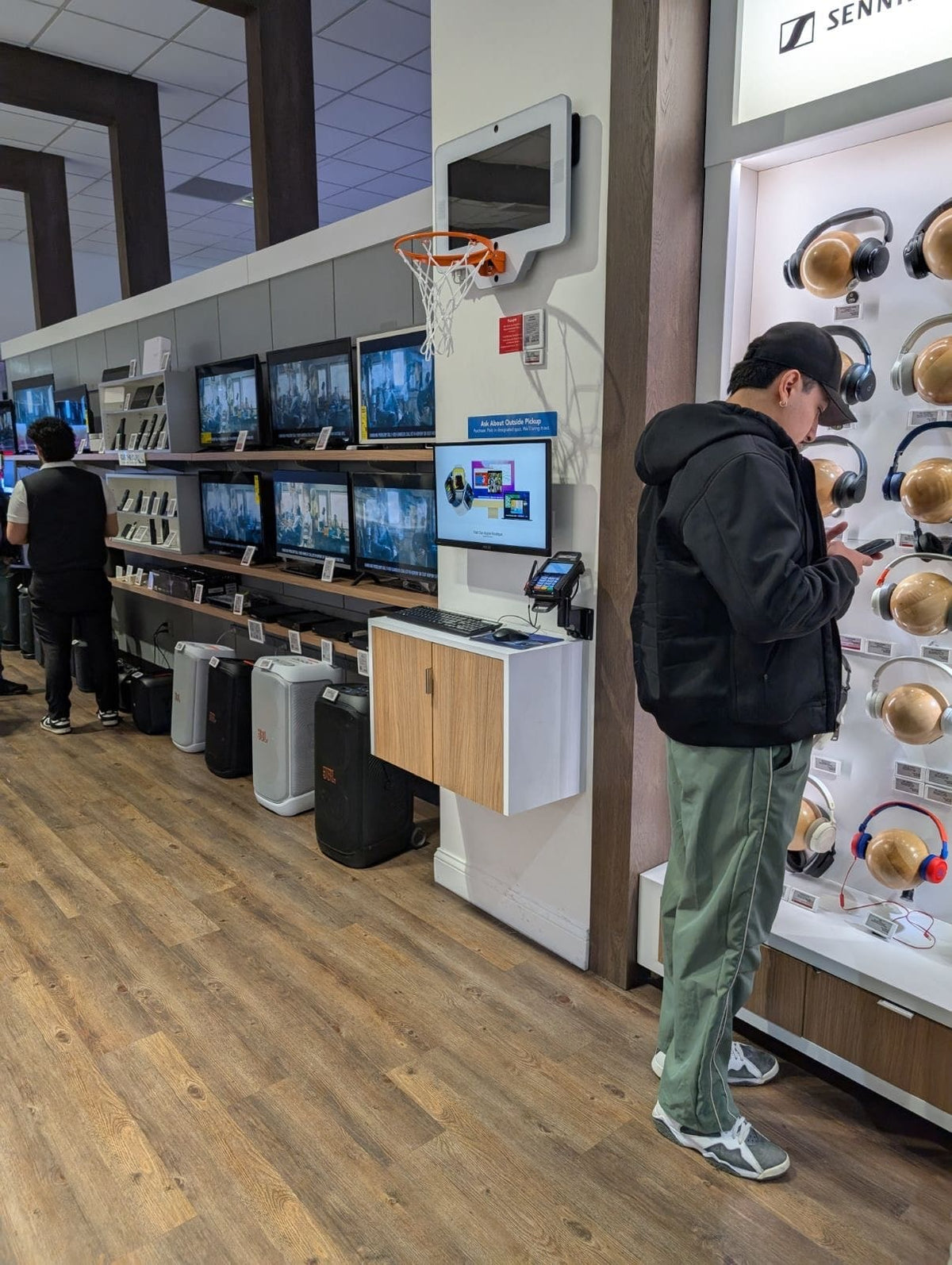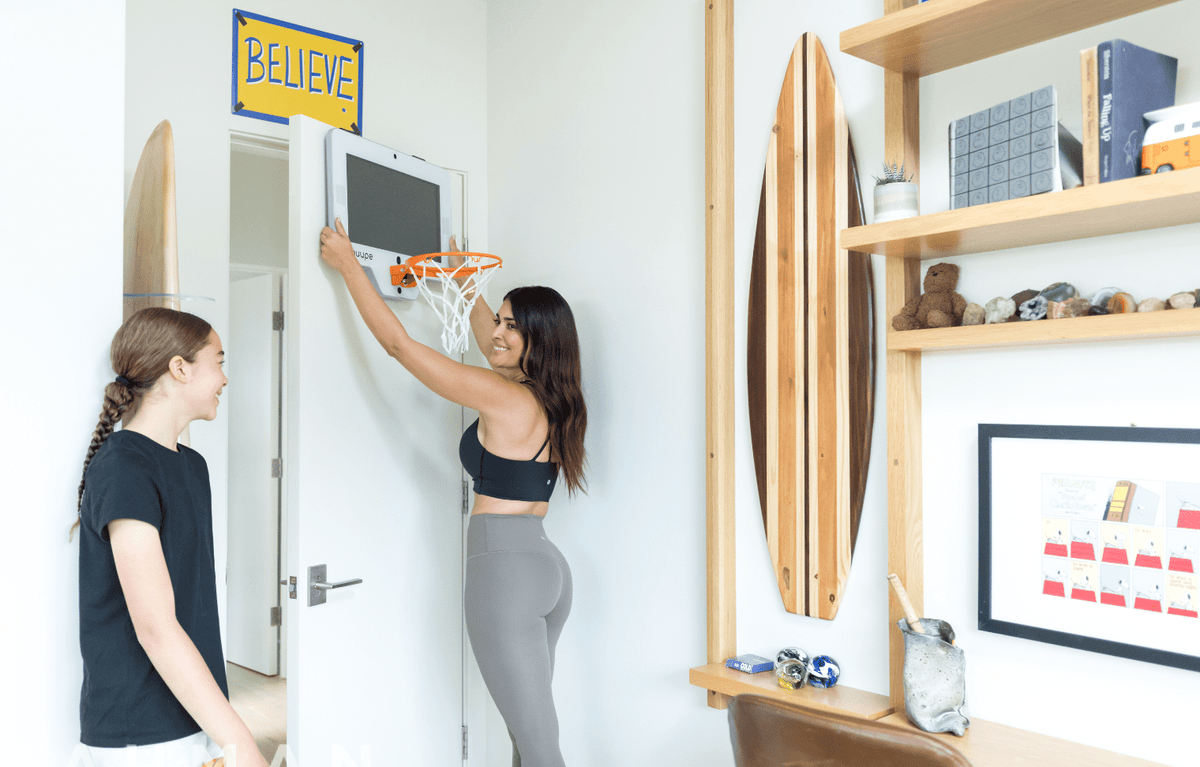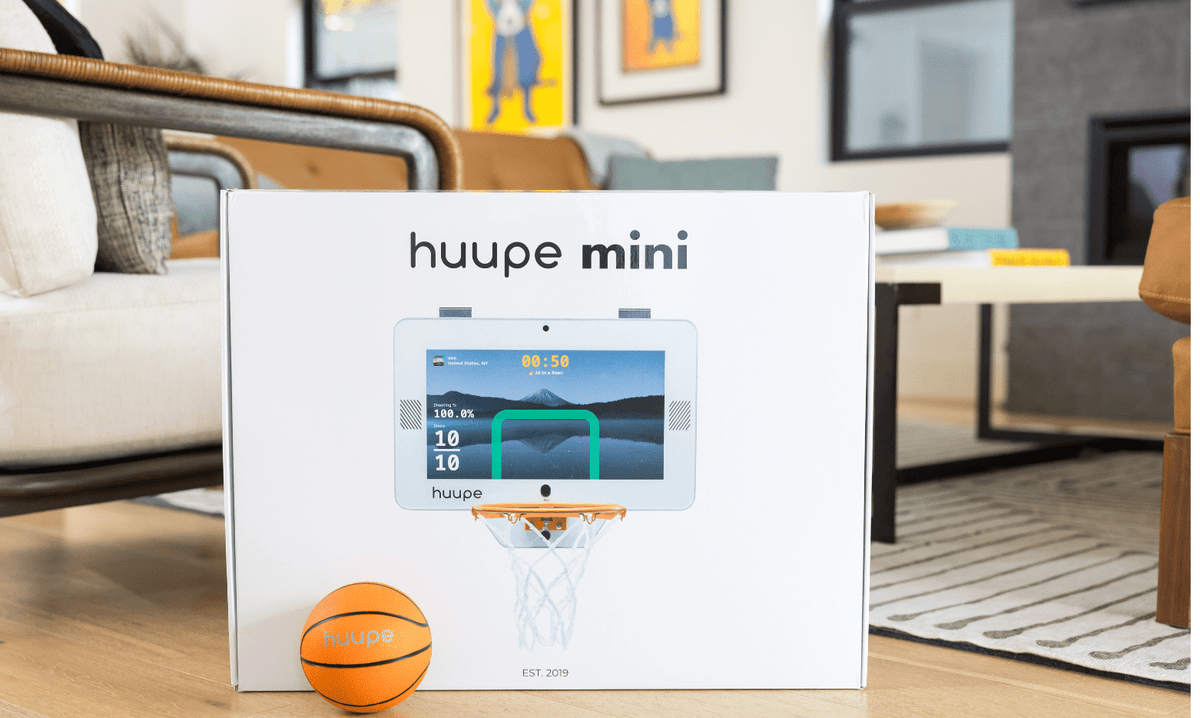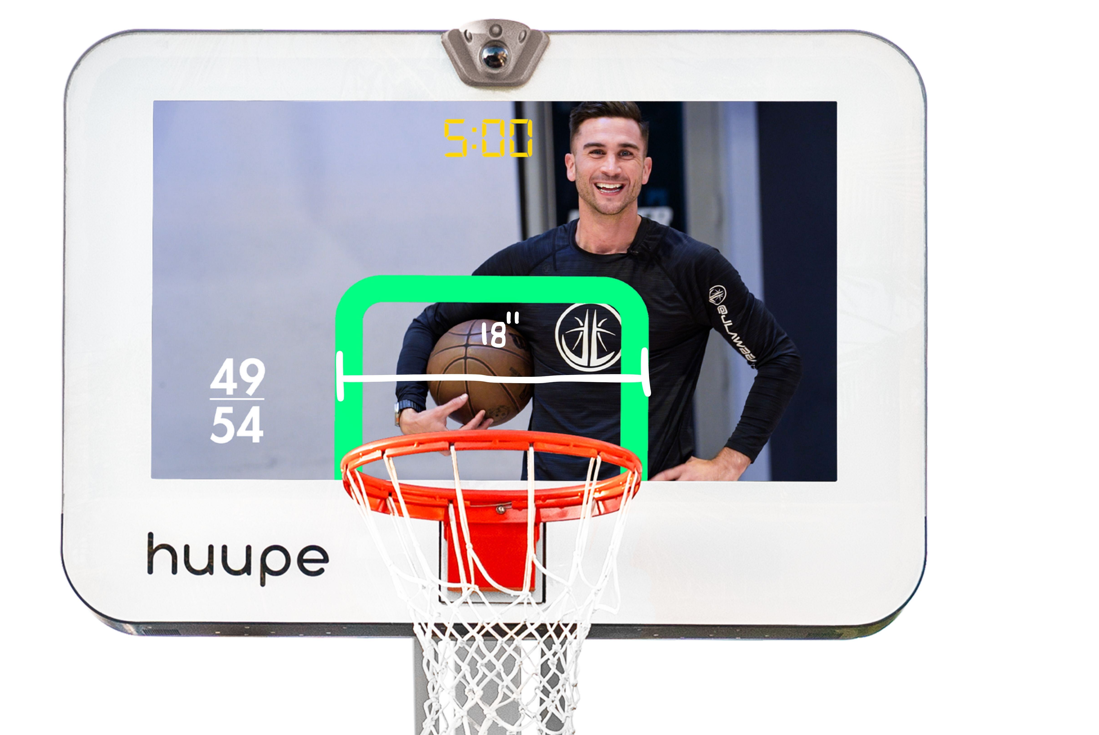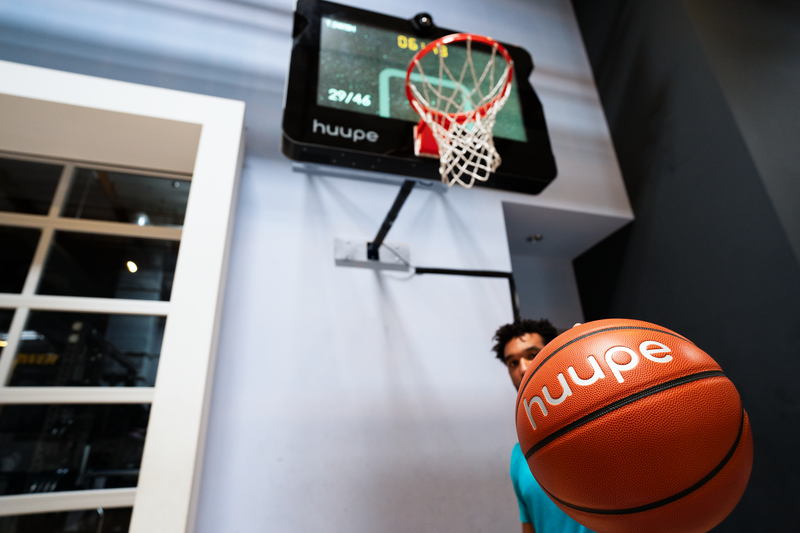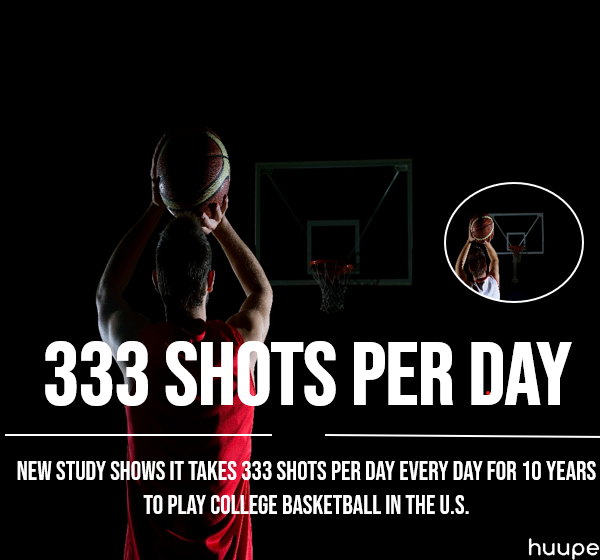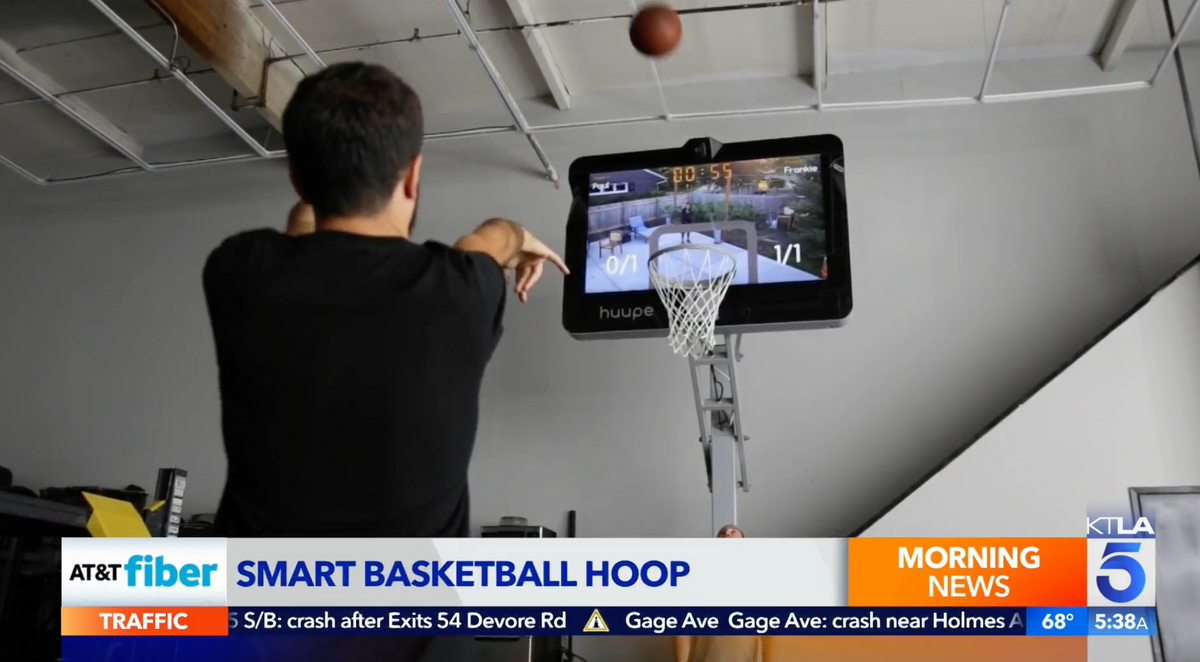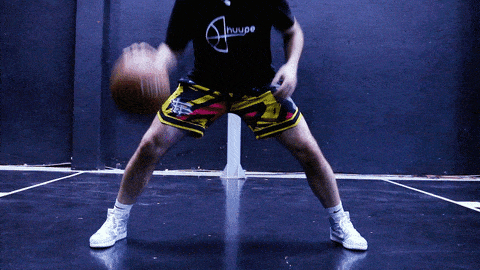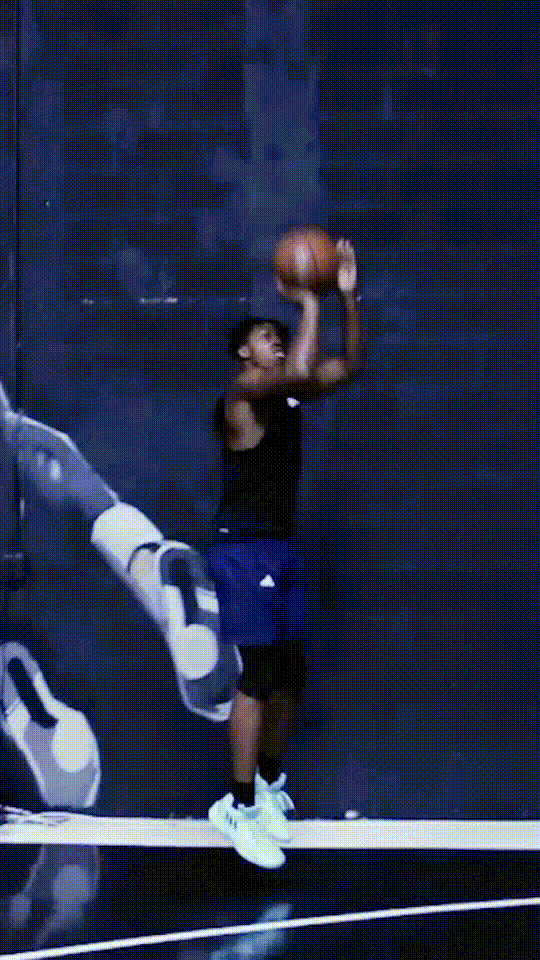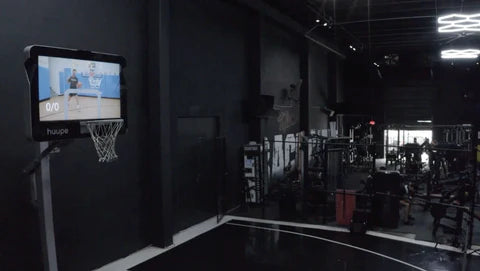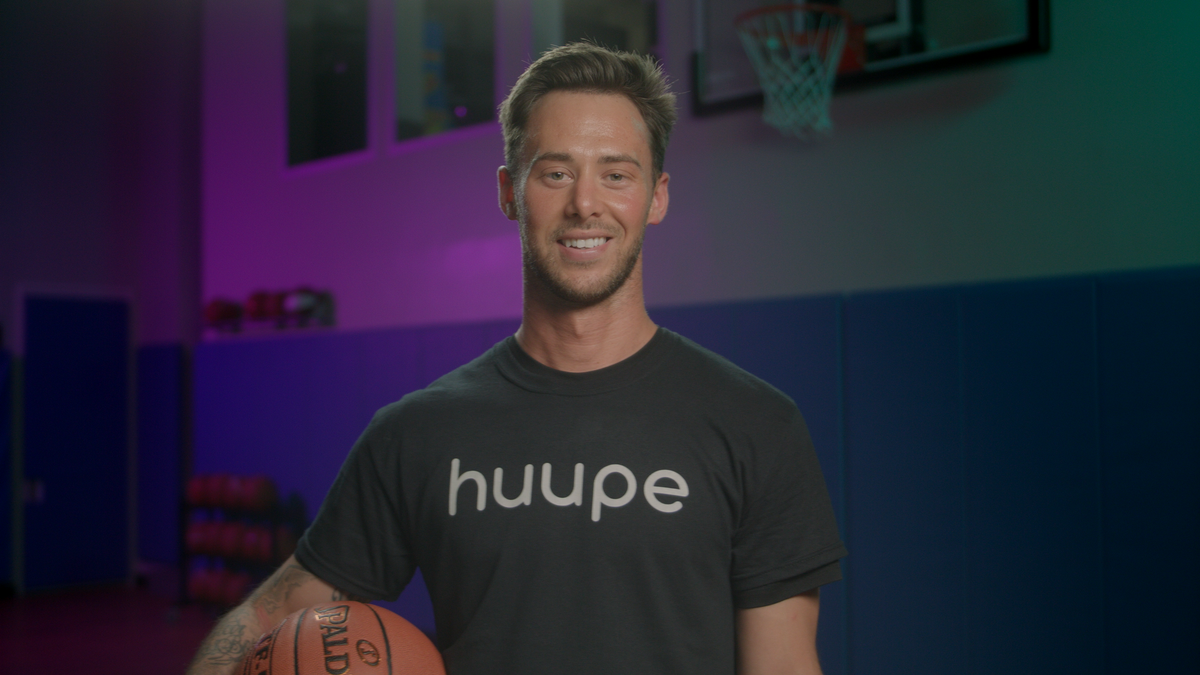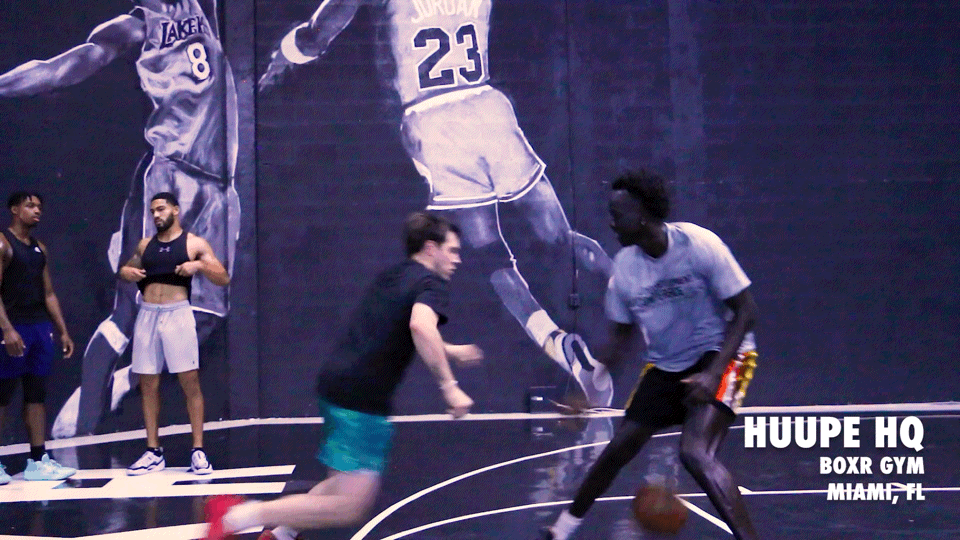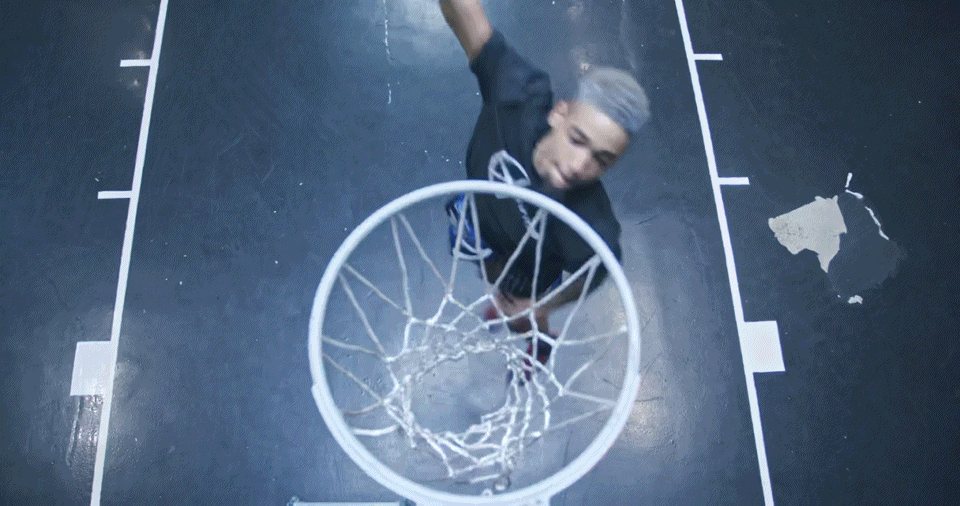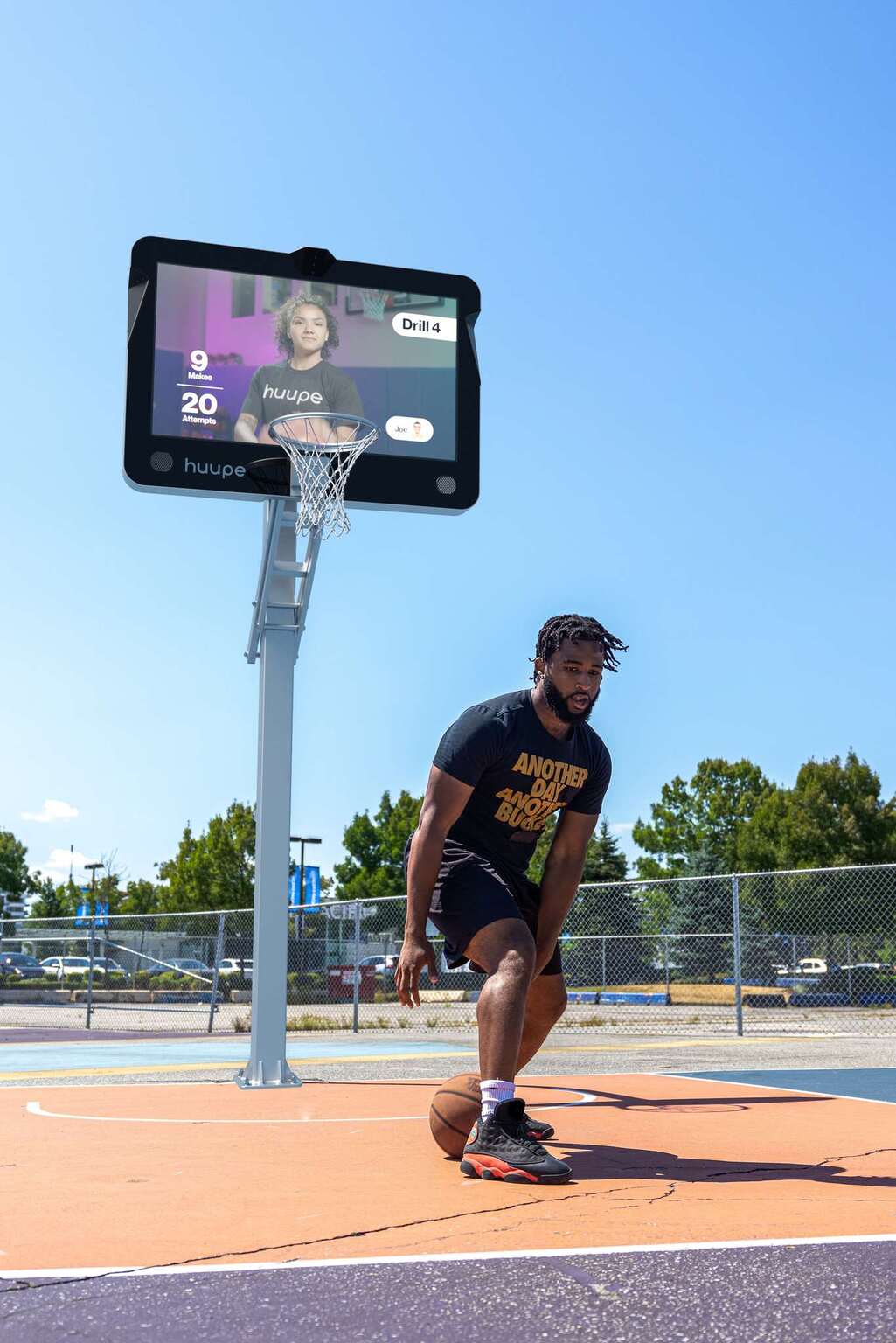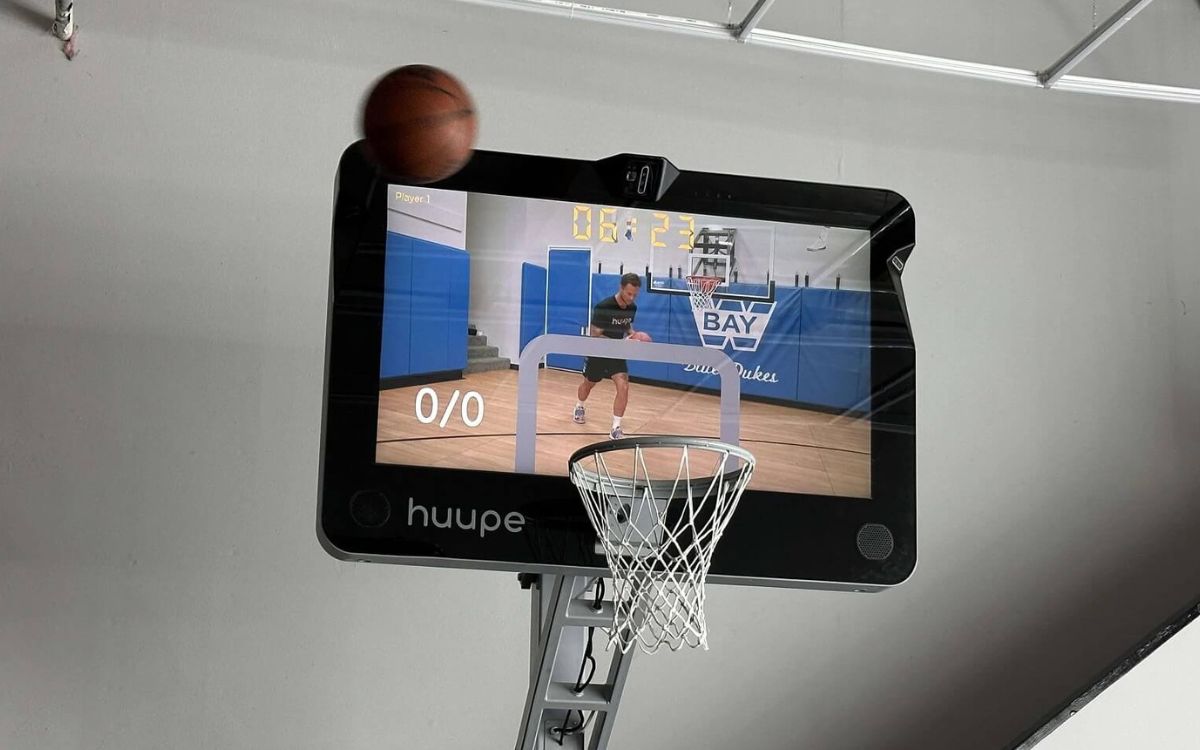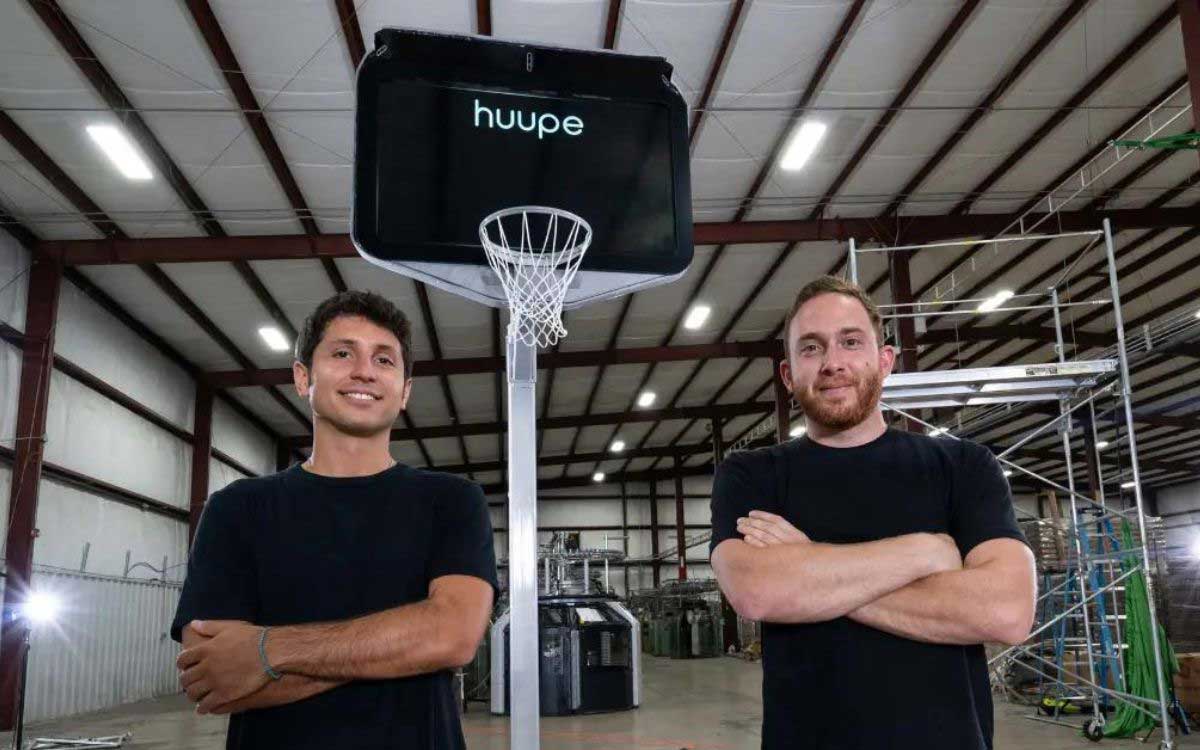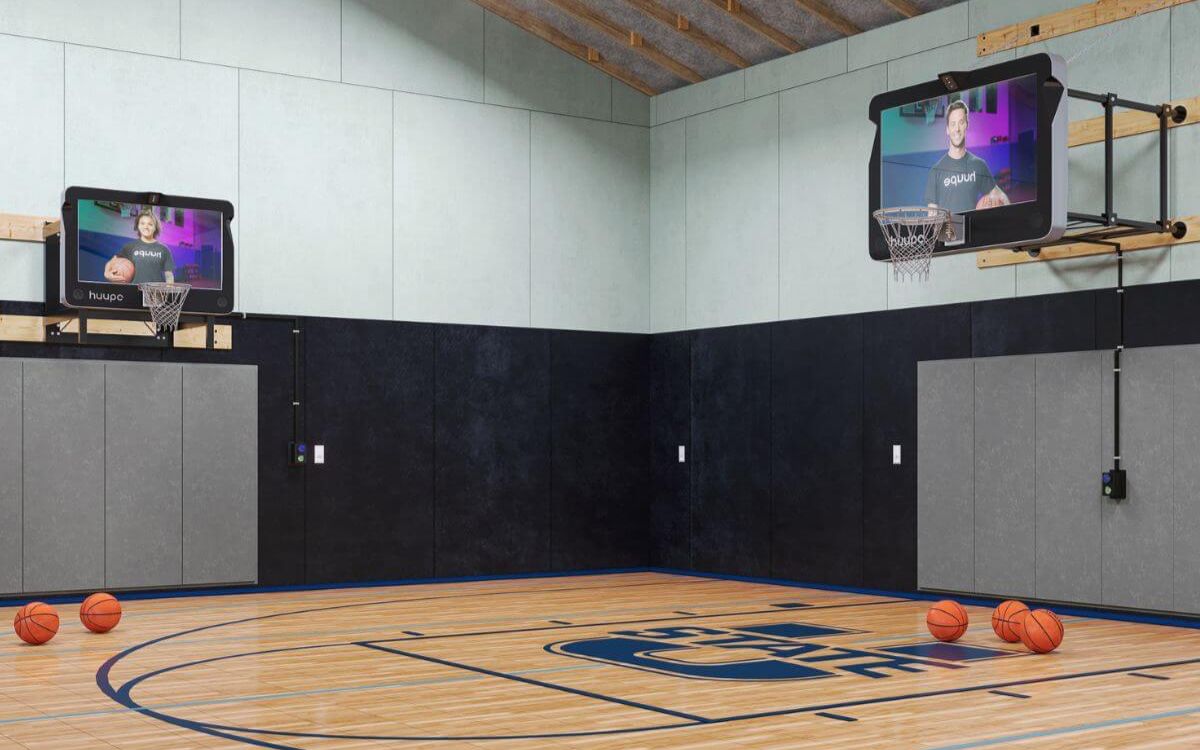Three years after the brainstorm and two years after the machine learning, three buddies from Milwaukee drove East to test out theirbabyin the place that never sleeps or turns down an open jump shot.
New York City.
They stuck their product called Huupe on a flatbed fruit truck, randomly parked in Chinatown, made sure the rim measured 10-feet high off the street and rolled out a basketball.
What happened next confirmed their hypothesis: if you turn a glass backboard into a television screen that can gamify, stream live broadcasts, FaceTime, track shots, identify shot trajectory, calculate makes and misses, correct shooting mechanics and automate coaching… people will salivate.
In a (New York) minute, a mass of humanity surrounded their flatbed truck, took thousands of jump shots and set shots and validated the newest smart basketball hoop on the market — a product altogether different straight down to how it is spelled.
The genesis of this idea
Slated for release in 2023, Huupe has combined computer vision and subsets of machine learning to mesmerize its users and investors, which include Toronto Raptors forward Thaddeus Young and former NBA player Trevor Booker.
At its core, though, Huupe was designed to connect shooters from driveways all over the world. And, at its infancy, the first of those shooters was standing all alone in Brookline, Mass.
Eleven years ago, Paul Anton was a freshman at Boston College wishing he could still play H-O-R-S-E with his younger brother Frankie back in his Milwaukee-area hometown of Whitefish Bay. So Anton opened his mobile phone’s Snapchat app, recorded a jump shot and sent it his brother. Frankie did the same right back.
"From 1,000 miles away, we first started doing that," Anton says. "And that was really the genesis of this idea. To create something that allows us to play basketball remotely."
After graduating from B.C. with a degree in political science, Anton headed to law school at the University of San Francisco. But a funny thing happened after graduation: he became an inventor.
Raised in a basketball family — his mother, Joanne, played college basketball at Marquette and his dad, Nick, at UW-Oshkosh — he still had the constant urge to shoot via Snapchat with his little brother. But filming with his left hand while shooting with his right was an inconvenience, not to mention a hindrance to his midrange jumper. So he and a co-founder developed an easier, hands-free way to have real-time, long-distance shooting contests.

Huupe offers personalized trainings via the backboard’s screen
‘Real Shot‘
They called their product, Real Shot, an augmented reality basketball game that required users to don Microsoft Halo Lens glasses while shooting. When worn simultaneously, the AR glasses could connect people globally, all while tracking makes and misses on the product’s app. But the downside, Anton says, was that the glasses felt clunky.
"My co-founder who came up with the [Real Shot] idea, he said, ‘Hey, this app is pretty cool, but look at Peloton, look at Mirror,'" Anton says. "He said, ‘What if we took your game as you created it and put a screen on a backboard?’ So we pivoted the idea from that company and built Huupe."
At that time, circa 2019, the biggest question mark was this so-called screen on the backboard. Would it shatter into a million pieces if someone banked a shot in? Would it crater the second someone threw down a tomahawk dunk? Anton, his co-founder Lyth Saeed and his CTO Dan Hayes — all 20-something Milwaukee-area natives — worked with engineers to cover the screen with the same tempered glass used on NBA backboards.
Then they got the biggest, baddest men they could find to trial it with ricochet bank shots and dunks.
One was Booker, the former NBA power forward with biceps on top of biceps. Another was the wiry and positively strong Raptors forward Young. Anton told them to tear the backboard down. They could not.
"We’ve been testing for over two years and haven’t had a single breakage," Huupe CEO Anton says. "I mean, we’ve been dunking all over this thing."
Stats and gamification
Hayes, Huupe’s CTO and a former UW-Madison computer science major, explained, “All our NBA players have thrown balls against it, and it feels right. The hoop isn’t connected to the glass, so dunking won’t transfer force to the screen —it goes straight into the frame.” Once they confirmed the HD screen was dunk-proof, Huupe unlocked endless possibilities — live NBA games, YouTube, Ted Lasso, and proprietary coaching videos. They won over Booker, the first NBA-caliber player to test it, by streaming his career highlights on the backboard while he shot.

Huupe users can live stream from the high-definition screen while shooting
Anton’s next step was perfecting the shot tracking, which would enable stats and gamification. Originally, a sensor was embedded in the rim but was too costly and couldn’t account for airballs. The better solution was computer vision. So engineers inserted six cameras into the backboard that could track every toe, foot, hand and elbow of a shooter all the way to half court.
The result was a weather-proof, computing backboard that could spit out a shot chart down to the inch and calculate makes and misses. By configuring that, they could create games such as the 90-second Great American Shooting Challenge (one point for a layup, two for a midrange, three for a 3-pointer), where someone in L.A. could conceivably match up against someone in Bangladesh.
Knocking on his door to license it
At that point, Anton was about to put the product on the market…until he saw the price tag: $8,000 to $10,000. He gulped and went back to the drawing board.
The engineering fix was to remove half the cameras and strategically place the remaining three at the top of the backboard and right and left wings, respectively. After the requisite testing, the skeletal tracking was still accurate down to the inch and could literally measure a user’s vertical jump and wingspan.
Just like that, the cost dropped down to $4,000. It was time to go public, which meant the team had to settle on a name, once and for all.
At first, their inclination was to name it HOOP, which Anton found underwhelming. "It was too generic," he says. "I don’t think we would’ve gotten the trademark."
Then one of them suggested a nonsensical variation of the word, "Huupe," raising their eyebrows. "We were able to get the trademark on Huupe," Anton says "People mispronounce it all the time, but it doesn’t matter. We just love the way it looks."
From there, it was time to take the hoop named Huupe on the road. The team crisscrossed the country with it eight times, demoing the streaming backboard to investors and ballplayers. Kevin Coble, the former Northwestern sharpshooter, set a record with 66 points on the Great American Shooting Challenge — sinking 22 out of 23 three-pointers. Young was second on the leaderboard with 60, while Pat Connaughton of the Milwaukee Bucks notched 54.












